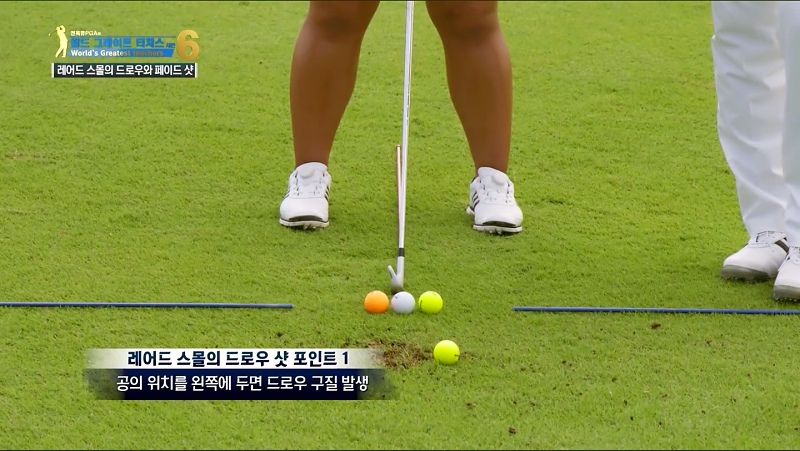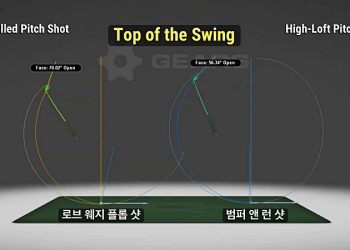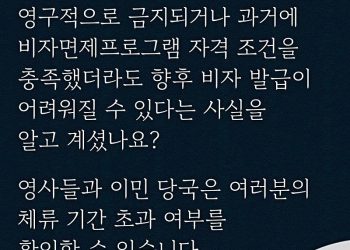골프에서 파워 드로 샷과 파워 페이드 샷은 스윙 기계학적 측면에서 큰 차이가 있다. 드로 샷과 페이드 샷은 볼의 궤적에 따라 구분된다. 둘 다 숙련된 골퍼에게 유용한 기술이며, 상황에 따라 적절한 샷을 선택해 코스를 공략한다.
드로 샷은 오른손잡이 기준으로, 볼이 오른쪽에서 왼쪽으로 휜다. 페이드 샷은 오른손잡이 기준으로, 볼이 왼쪽에서 오른쪽으로 휘어 날아간다. 거리는 드로 샷이 보통 더 멀리 날아간다. 볼이 더 낮은 탄도를 그리면서 지상에 닿은 후 더 잘 구르기 때문이다. 페이드 샷은 드로 샷보다 상대적으로 짧다. 상대적으로 높은 탄도와 더 많은 백스핀이 걸려 착지 시에 더 빨리 멈추기 때문이다.
백스윙을 비교해 보면, 드로 샷은 약간 안쪽에서 바깥쪽으로 가는 스윙 궤도를 취한다. 클럽 페이스와 스윙 궤도 사이에 닫힌 각을 형성하여 드로 효과를 낸다. 페이드 샷은 약간 바깥에서 안쪽으로 가는 스윙 궤도를 가진다. 이로써 클럽 페이스와 스윙 궤도 사이에 열린 각이 만들어져 페이드 효과를 주게 된다.
볼 위치는 드로 샷의 경우 스탠스 안쪽에 놓으며, 클럽 헤드가 좀 더 닫힌 방향으로 마무리된다. 페이드 샷은 드로 샷보다 조금 왼쪽에 놓고, 클럽 헤드가 열린 방향으로 마무리된다.
볼 스핀양도 차이가 있다. 드로 샷은 보통 왼쪽으로 회전 스핀 (side spin)이 발생, 백스핀이 덜 걸린다. 페이드 샷은 오른쪽으로의 회전 스핀과 더 많은 백스핀이발생된다. 볼도 상대적으로 잘 멈춘다.
 두 샷은 모두 장단점이 있기 때문에 상황과 코스에 맞게 선택해야 하고, 연습을 통해 자신의 샷 스타일에 맞게 조절하는 것이 중요하다.
두 샷은 모두 장단점이 있기 때문에 상황과 코스에 맞게 선택해야 하고, 연습을 통해 자신의 샷 스타일에 맞게 조절하는 것이 중요하다.
파워 드로 샷을 이해하려면 신체 움직임을 살펴볼 필요가 있다. 파워 드로는 샷의 방향을 약간 왼쪽으로 시작해 오른쪽으로 꺾이는 궤적이다. 3D 모션 분석을 통해 바디 모션 데이터를 살펴보면, 드로 샷은 상대적으로 닫힌 상태에서 임팩트를 가진다. 상체와 하체의 회전이 조화롭게 이루어져야 하며, 하체의 리드가 필수적이다. 이는 임팩트 순간 클럽 페이스가 목표선보다 닫히도록 유도한다.
클럽 패스는 인-투-아웃으로 이루어져야 하며, 이는 오른손잡이 기준 임팩트 순간 클럽 페이스가 선보다 살짝 왼쪽을 바라보지만, 스윙 패스는 오른쪽으로 이루어지는 패턴을 보인다. 이를 통해 클럽의 회전과 손목의 릴리즈가 중요한 요인이 된다.
파워 페이드샷은 샷 방향이 약간 오른쪽으로 시작해 왼쪽으로 꺾인다. 3D 모션 분석은 열림 상태에서의 임팩트를 보여준다. 상체 회전이 하체보다 조금 더 지연되어 왼쪽으로의 회전 모멘텀을 증가시킨다. 이는 임팩트 순간 클럽 페이스가 목표선과 거의 일치하게 한다.
클럽 모션을 보면 클럽 패스는 아웃-투-인으로 이루어지며, 임팩트 순간 클럽 페이스가 목표선보다 조금 오른쪽을 향하게 된다. 이는 슬라이스 형태를 방지한 것이며, 무게 중심의 일정한 이동이 필요하다.
드로 샷은 일반적으로 낮은 백스핀과 높은 런치 각이 결합해 거리를 극대화시키지만, 컨트롤이 어려울 수 있다. 반면, 페이드 샷은 높은 백스핀으로 인해 더 많은 컨트롤과 그린에서의 구조적 안정성을 제공한다. 드로는 볼 속도가 더 빨라지는 경향이 있으며, 이는 추진력을 증가시킨다. 페이드는 방향성을 강화해 목표를 향한 타깃 정확성을 높인다.
☞ 전욱휴는…
서울대 졸업 후 미국에 유학, 1996년 PGA 클래스A 프로가 됐다. 이후 28년만인 2024년 전세계 골프계 최고 권위의 ‘PGA 마스터 프로페셔널’ 자격을 획득했다. SBS, MBC, JTBC, YTN 등의 골프 채널 진행자 및 해설자로 활약했고, 지금은 애틀랜타와 한국을 오가며 골프 레슨 및 골프 관련 비즈니스를 하고 있다. chungolf@gmail.com
드로 샷의 경우 어드레스 시 볼 위치는 스탠스 안쪽에, 페이드 샷은 드로 샷보다 조금 왼쪽에 놓는다.
[Dr. Eric Chun’s Golf Lesson] 32. For driver shot-making !!
employ a power draw for optimal distance and choose a power fade for enhanced directional control.
In golf, power draw shots and power fade shots differ significantly from a swing mechanics perspective. Both draw and fade shots are distinct shot types based on the trajectory of the ball. These techniques are valuable for skilled golfers, allowing them to strategically navigate the course by selecting the appropriate shot for each situation.
For a right-handed player, a draw shot curves the ball from right to left. Conversely, a fade shot curves the ball from left to right. When comparing distance, draw shots generally travel farther due to their lower trajectory and the additional roll after landing. Fade shots, on the other hand, are relatively shorter, achieving higher altitude with more backspin, which causes the ball to stop more quickly upon landing.
Examining the backswing, a draw shot uses a slightly inside-to-outside swing path, creating a closed angle between the club face and swing path, producing the draw effect. Meanwhile, a fade shot follows a slightly outside-to-inside swing path, creating an open angle between the club face and swing path, resulting in the fade effect.
Regarding ball positioning, in a draw shot, the ball is placed further back in the stance with the club head closing more at the finish. In a fade shot, the ball is positioned slightly left compared to a draw shot, with the club head opening more at completion.
Spin rates also differ significantly between the two. A draw shot typically incurs leftward side spin with less backspin, whereas a fade shot results in rightward side spin with more backspin, enhancing its stopping power.
Each shot type offers unique advantages and disadvantages. Selecting the appropriate shot based on the course and conditions is essential, and adapting it to one’s playing style through practice is equally important.
To comprehend the power draw shot, one must consider body movements. The power draw initiates with the shot directed slightly to the left, then curving right. 3D motion analysis indicates that a draw shot impacts in a relatively closed position. Harmonious upper and lower body rotation is crucial, with the lower body leading the movement to ensure the clubface closes at impact. The club path follows an inside-to-out pattern, meaning for a right-hander, the clubface points slightly left at impact while the swing path moves right. This balance of club rotation and wrist release is pivotal.
The power fade shot starts slightly right, curving left. 3D motion analysis reveals impact in an open position. Upper body rotation slightly lags behind the lower body, increasing leftward rotational momentum. At impact, the clubface aligns closely with the target line. The club motion follows an outside-to-in path, positioning the clubface slightly right of the target at impact, thus avoiding slicing while maintaining balanced weight transfer.
A draw shot maximizes distance with low backspin and a high launch angle, yet may compromise control. In contrast, a fade shot offers greater control and structural stability on the green due to high backspin. A draw tends to accelerate ball speed, enhancing thrust, while a fade emphasizes directional precision, improving target accuracy.





![[전욱휴 골프레슨] 32. 드라이버 샷 메이킹](https://www.atlantajoongang.com/wp-content/uploads/2024/10/aKakaoTalk_20241031_071444145_01-750x420.jpg)













![[전욱휴의 골프 레슨] 46. 배치기(얼리 익스텐션)](https://www.atlantajoongang.com/wp-content/uploads/2025/03/photoKakaoTalk_20250306_073237889_01-350x250.jpg?v=1741361116)
![[전욱휴의 골프 레슨] 45. 임성재 '행온페이드' 샷](https://www.atlantajoongang.com/wp-content/uploads/2025/02/collage1-350x250.jpg)
![[전욱휴의 골프레슨] 44. 일관된 샷을 원한다면](https://www.atlantajoongang.com/wp-content/uploads/2025/02/QKakaoTalk_20250212_065748485-350x250.jpg)

![[전욱휴 골프 레슨] 42. 오른쪽 팔꿈치 역할](https://www.atlantajoongang.com/wp-content/uploads/2025/01/qQ1KakaoTalk_20250130_072058648-350x250.jpg)
![[전욱휴의 골프 레슨] 41. 매킬로이 파워 스윙](https://www.atlantajoongang.com/wp-content/uploads/2025/01/qQ1KakaoTalk_20250122_123635940-350x250.jpg)




